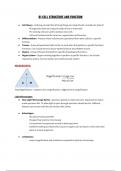Other
Btec Applied Science Unit 1 Biology Revision Notes
- Course
- Institution
Clear and concise revision notes to prepare for the Unit 1 exam. Includes everything needed to be known for the Unit 1 exam. I achieved Distinction grade using these notes. Happy to take any questions :)
[Show more]



